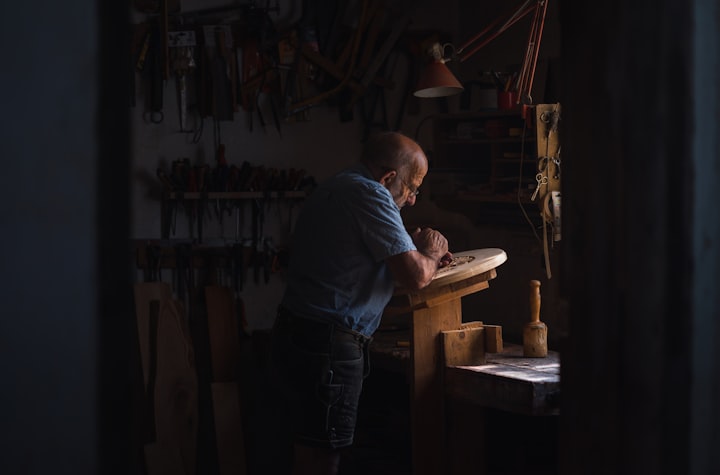
Click here to get a Bible of Woodworking
Start writing...Woodworking is as much about skillful craftsmanship as it is about understanding the techniques that hold the pieces together. While modern adhesives and fasteners have their place, there's a timeless appeal to traditional wood joinery techniques. These methods not only enhance the structural integrity of your creations, but also add a touch of elegance to your woodworking projects. In this guide, we'll delve into the world of traditional wood joinery, exploring its rich history and highlighting some essential techniques every woodworker should know.
Understanding Traditional Wood Joinery : Traditional wood joinery involves creating strong connections between wooden pieces without relying on nails, screws, or glue. Instead, it relies on precise cuts, shapes, and interlocking mechanisms to secure joints. This approach not only showcases the natural beauty of wood but also ensures longevity and durability in your projects.
Common Wood Joinery Techniques:
Dovetail Joints: Dovetail joints are renowned for their strength and aesthetic appeal. They consist of interlocking wedge-shaped projections that fit together like puzzle pieces. Dovetails are commonly used in drawer construction and box making, where both functionality and visual appeal are essential.
Mortise and Tenon Joints: Mortise and tenon joints involve a projecting tenon on one piece of wood fitting into a corresponding mortise or hole on another piece. This technique is versatile and can be adapted for various applications, including furniture construction, frame assembly, and door joinery.
Half-Lap Joints: Half-lap joints involve cutting away half the thickness of each piece of wood at the joint, creating a flush surface when the pieces are joined together. This technique is often used in cabinetry, shelving, and framing, where strength and simplicity are paramount.
Tongue and Groove Joints: Tongue and groove joints consist of a protruding "tongue" on one piece of wood fitting into a corresponding groove on another piece. This creates a strong, seamless connection that is ideal for flooring, paneling, and joining tabletops.
Click here to get a Bible of Woodworking

Tips for Mastering Traditional Wood Joinery
Precision is Key: Accuracy is crucial when it comes to traditional wood joinery. Invest in high-quality measuring tools and practice precise cutting techniques to ensure snug, seamless joints.
Choose the Right Wood: Different wood species have varying densities and grain patterns, which can affect the strength and appearance of your joints. Experiment with different woods to find the perfect match for your projects.
Practice Patience: Traditional wood joinery requires patience and attention to detail. Take your time to carefully plan and execute each joint, and don't be afraid to practice on scrap wood before tackling your final piece.
Embrace Tradition: Traditional wood joinery techniques have stood the test of time for a reason. While modern fasteners may offer convenience, there's a timeless beauty in the craftsmanship of traditional joints. Embrace the challenge and satisfaction of mastering these age-old techniques.
In conclusion, exploring traditional wood joinery techniques opens up a world of possibilities for woodworkers. Whether you're a seasoned craftsman or a novice enthusiast, incorporating these timeless methods into your projects adds a level of skill and artistry that sets your work apart. So, roll up your sleeves, sharpen your tools, and embark on a journey of discovery as you explore the rich tapestry of traditional wood joinery.





Comments (1)
Hello, AI is permitted on Vocal. It is a Vocal policy that content created with AI is identified as such at the start of the story/article. Your article/story has many hallmarks of AI-assisted/generated content. You can find the details of the Vocal policy here: https://vocal.media/resources/an-update-from-vocal-on-ai-generated-content, Please amend your piece to be in compliance. If you are not a Vocal+ member you will need to contact Vocal here ([email protected]) and ask them to send your content back into your 'Drafts' where you can edit your story/article/poem. If you don’t correct this the content may be removed by Vocal and/or you may be deleted from the platform. This has been reported to Vocal.